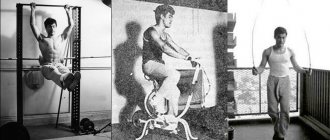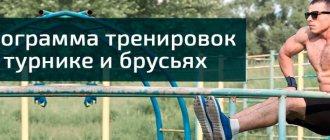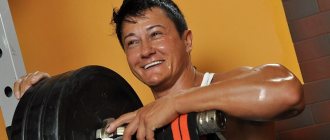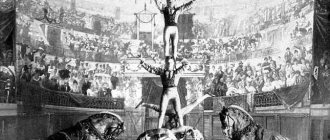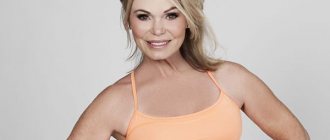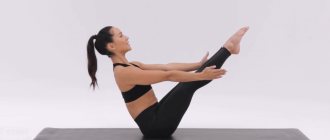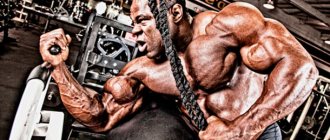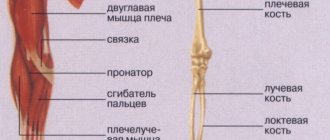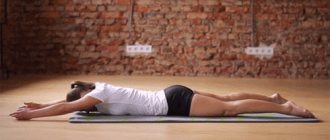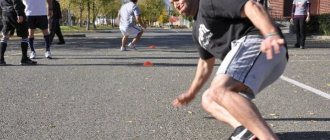Training programsRelief programs
40 years ago, young athletes drew inspiration from the inimitable physical strength, speed and flexibility of Bruce Lee. Not much has changed since then. Take out the heavy bag and adopt the training principles of the great master!
Author:
Arnav Sarkar
Openness and flexibility are two characteristic features of Bruce Lee's approach to physical training.
“Absorb what’s useful. Cut off the useless." These legendary words are often attributed to Bruce Lee, and although it is not known for certain whether he actually spoke them, there is no doubt that this principle underlay the philosophy of his martial art. The legendary and eclectic martial arts style of Jeet Kune Do, the “Way of the Leading Fist,” is based on striking at the moment the opponent’s attack begins, when any external influence slows down the opponent and leads to a fatal outcome. Thanks to this, Bruce Lee was unpredictable, and his fights were spectacular!
Openness and flexibility are two characteristic features of Bruce Lee's approach to physical training. While his colleagues and their mentors were wasting precious time on empty debates about traditions and futile searches for one-sided, technically and functionally oriented training systems, Lee absorbed the best that various schools had to offer. He took what he needed from martial arts, bodybuilding and other training styles. Lee was loyal to his barbell and his kettlebells, but also loved circuit training; I practiced kicking and punching every day with complete dedication, but also ran, rode a bike and jumped rope.
In short, he was a well-rounded athlete with a body that Joe Weider described as the most ripped he had ever seen. 40 years after Bruce's tragic death, people continue to be inspired by his unique blend of speed, strength and flexibility. New photos of Bruce Lee without a T-shirt still appear on magazine covers today and become the main topic of the issue.
Of course, Lee never trained just to look good. The main goal was to create a perfectly functioning body, and appearance was just a byproduct of his training. According to Bruce, training is “the art of self-expression of the human body.” We'll tell you how he did it and how you can replicate it.
Train to fight
Lee belonged to the sport's elite: since the late 50s, he was a mentor and fighter, capable of incredible feats of strength such as two-finger push-ups and the "inch punch" that sent opponents flying. However, he revised all training methods after an event that occurred in 1964. That year, Bruce Lee was challenged by Won Jae Man, a representative of the orthodox branch of Chinese martial arts. According to sources, the reason for the disagreement was Bruce Lee's willingness to teach traditional Chinese martial arts to everyone - even Europeans. According to this version of events, if Lee had lost, he would have been forced to close his thriving martial arts school.
Soon Bruce Lee won and retained the right to teach anyone, anything. However, Lee later admitted that although the fight lasted only three minutes and ended with him running after Meng around the pavilion, the fight took much longer than expected and required more effort than Lee expected. Angry with himself, Lee decided to overhaul his training program and began searching for what his wife Linda called “more sophisticated and grueling training methods.”
Very soon, Lee switched to an intensive program of strength development and general functional training, which he adhered to until his death in 1973. He constantly changed the content of his training and always recorded it on video. This means that while we can't recreate Bruce Lee's exact "workout routine," we can piece together his favorite exercises and routines. In short, if you want to leave behind a “muscle treasure map” for future generations, or simply want to draw one for yourself, follow the example of Bruce Lee and take as many travel notes as possible.
Three Variables of Circuit Training
Lee's circuit training method has three variables:
1. weight (weight used);
2. repeatability (number of approaches and repetitions);
3. time (duration of completing the entire circle and speed of repetitions).
Other types of training, such as weightlifting, involve only two variables:
1. weight (work with limited weights);
2. repeatability (low number of repetitions and emphasis on single attempts).
Individual types of training, such as intermittent training, also use two variables:
1. repeatability (fast execution);
2. time (variable time periods for running/walking or sprinting/jogging).
All three main functions are involved in circuit training, and the time factor is of paramount importance among them. The constantly increasing demands of the respiratory system are comparable to the process of muscle growth caused by increasing the weight used in training and, consequently, with the development of strength, endurance and respiratory activity. Thus, the benefits of circuit training for those who want to achieve a more polished physique are: that, in addition to developing endurance With the help of the respiratory system, training is carried out with weights, which contributes to the further formation of pronounced muscles and giving them hardness, clarity and filigree (which in the language of bodybuilders is called “muscle density” or “compactness”) - that is, such training simultaneously develop ideal muscles and increase endurance.
Train hard, hit hard
Any conversation about Bruce Lee's training principles must begin with his signature martial art style. Bruce began mastering martial arts under the guidance of the great master Ip Man, the patriarch of the Wing Chun school (Kung Fu style). Having learned the basics, Lee continued to develop and over time created his own style - Jeet Kune Do. Unlike traditional schools, Jeet Kune Do is not tied to any fixed tenets. According to Lee, it is “style without style,” a free-flying martial arts that embraces whatever works.
But does this mean that Bruce did not need to carefully practice his technique? On the contrary, he had to keep his entire arsenal of techniques in full combat readiness, and therefore he devoted the lion's share of his free time to training. Here is a typical list of kicks and punches that Lee practiced.
Punching the punching bag
Punching: Monday/Wednesday/Friday
- Jab – pneumatic bag, wall pad, punching bag and floor bag
- Cross – wall pad, heavy punching bag, punching bag and floor bag
- Hook – heavy punching bag, wall pad, punching bag and floor bag
- Cross from top to bottom – pillow, heavy punching bag
- Series – heavy punching bag, punching bag and floor bag
- Speed training with a pneumatic bag on a platform
Kicks: Tuesday/Thursday/Saturday
- Side impact
- Side leg hook
- Turning kick
- Front and back kick
- Heel strike
Lee often said that a punching bag cannot be punched automatically, without emotion. Imagine that the bag is your worst enemy, and hit him with all your heart. He also emphasized how important it is to remain invulnerable during an attack - even in training. Lee constantly moved, made distracting maneuvers, feinted punches and stepped aside even while working with a boxing bag, thereby simulating a real fight. He firmly believed that a fighter who does not take training seriously will never be able to apply his skills in a stressful situation.
Personal life
Bruce Lee and Linda Emery
When Bruce was studying at the University of Washington, he became acquainted with Linda Emery - she was 17 years old at that time. During the classes, he showed the abilities achieved in kung fu. The girl ended up at the 1st lecture by chance, but later she also began to study with Bruce.
After meeting, they fell in love with each other. They celebrated their wedding in 1864. A year after the wedding, they had a son, whom they named Brandon. The couple also had a daughter, Shannon, in 1969.
Son Lee died under tragic circumstances while young. He was filming a movie and during the final scene he was supposed to be shot from a gun, but the shot was real. The young man was wounded; the bullet went through the stomach and remained in the spine. Less than half a day passed before he died. The cause of death was significant blood loss.
Brandom died 20 years from the date of his father's death. At the time of his death he was 28 years old. He was to get married in 17 days. Brandon was buried near his father in Seattle.
Shannon Lee's acting career also began to grow. However, at the moment she, her mother and husband are managing the foundation of her father, Bruce Lee.
Rod path
Even before the fight with Won Jae Man, Lee understood that no fighter could do without proper strength training. However, it was this fight, which coincided with the beginning of television and cinematic activities, that became the beginning of Bruce Lee's serious relationship with heavy iron.
dragon flag
Lee started by spending his days doing reverse-grip curls to tone up his forearm muscles. Having experienced the full benefits of strength training, he moved on to comprehensive strength training. On an ongoing basis, Bruce used two alternative training programs to develop incredible strength:
Alternate workouts A and B every Tuesday, Thursday and Saturday
Workout A
Kettlebell shoulder press 2
set of
8
reps
Squats 2
set of
12
reps
Pullover with a barbell on a straight bench 2
set of
8
reps
Bench press 2
set of
6
reps
Exercise "Good morning" with straight legs 2
set of
8
reps
Barbell curl 2
set of
8
reps
Workout B
Kettlebell shoulder press 4
set of
6
reps
Squats 4
set of
6
reps
Bench press 4
set of
5
reps
Exercise "Good morning" with straight legs 4
set of
6
reps
Barbell curl 4
set of
6
reps
In his ability to simultaneously work on muscle development and functional training, Bruce Lee was ahead of his time. Hungry for knowledge, he looked for evidence of the effectiveness of each technique and made his choice consciously, based on the results of research and experiments. As a result, he managed to transform himself from a skinny 50-pound guy into a 65-pound warrior who strikes with the force of a jackhammer.
Filmography
| Movie title | Year of release | Who played |
| "Golden Gate Girl" | 1941 | child |
| "Born of Man" | 1946 | |
| "Dream of Wealth" | 1948 | |
| "Sey Xi in Dreams" | 1949 | Yam Lee |
| "Little Chung" | 1950 | |
| "Child (My Son Ah Chung)" | 1951 | |
| "Early childhood" | 1951 | |
| "Conductor of Light" | 1953 | |
| "It's my father's fault" | 1953 | |
| "Facing Destruction" | 1953 | |
| "Mother's Tears" | 1953 | |
| "Countless Houses" | 1953 | |
| "Love" | 1955 | |
| "Love" part 2 | 1955 | |
| "The Orphan's Tragedy" | 1955 | |
| "Faithful wife" | 1955 | |
| "The Orphan's Song" | 1955 | |
| “We owe this to our children” | 1955 | |
| "Smart guys fool around" | 1955 | |
| "It's too late for divorce" | 1956 | |
| "Storm" | 1957 | |
| "Dear Girl" | 1957 | |
| "Orphan" | 1958 | Ah San |
| "Green Hornet" | 1966/1967 | Kato |
| "Marlow" | 1968 | In episodes |
| "Big boss" | 1971 | Zheng Chao'an |
| "Fist of fury" | 1972 | Chen Zhen |
| "The path of Dragon" | 1972 | Tang Lung |
| "Enter the Dragon" | 1973 | Lee |
| "Game of Death" | 1978 | Billy Lo |
Watch the video: Documentary about Bruce Lee:
At the intersection of meditation and functional training
Lee did not neglect endurance training. He understood that strength training was of little use without adequate endurance, so he used a variety of techniques to achieve amazing functional fitness.
Lee had someone throw a medicine ball onto his stomach while he lay on the floor and tensed his abs.
Run. For Lee, running has always been not only a way of general physical training, but also a unique form of meditation, because at this time he was alone with his thoughts. Every Monday, Wednesday and Friday he started by running a few kilometers. 6 kilometers was his favorite distance, which he ran in about 20-25 minutes, varying his running pace. After a stretch of calm, steady running, he would sprint for a short distance and then return to a moderate pace—much like what we call high-intensity interval training today.
Jumping rope.
The jump rope not only helped Lee develop endurance and leg muscle strength, but also allowed him to flit easily during sparring and fights. As a rule, Lee worked out with a jump rope on Tuesdays, Thursdays and Saturdays, devoting about 30 minutes to this exercise.
A ride on the bicycle.
On Tuesdays, Thursdays and Saturdays, Lee completed his jump rope workout with a spin on the exercise bike, which required even more endurance and finally finished off his leg muscles. He raced on his trainer at high speed for 45 minutes.
Oxygen - internal fire
When you eat food, it is stored in the body as fat and/or converted into protein. Fat is used to produce energy, and protein is used to build and increase muscle tissue. Oxygen is required to oxidize or burn fat for energy. Thus, the more oxygen absorbed by the body during training, the faster and more completely the fat is burned in it.
The lungs have a natural, involuntary need to breathe (that is, to continuously supply a certain amount of air). This natural need is stimulated by prolonged vigorous exercise or rapid movements.
Consequently, fat will not be burned sufficiently until this is facilitated by the constant and active work of the respiratory system. The more oxygen is delivered by blood to remote areas of the body containing fat deposits, the more subcutaneous fat is burned, and the more prominent the muscle outlines are.
Lee's famous shield
Bruce Lee, as well as other outstanding representatives of martial arts, needed abdominals not only for beauty. It was a real shield, capable of repelling any blow. To specifically target his abs, Lee would often have someone throw a medicine ball onto his stomach while he lay on the floor and tensed his abs.
However, traditional abdominal exercises such as sit-ups, leg raises and side crunches were also part of his training program. Here is one of the workouts that he did on a daily basis:
Bruce Lee Abs Workout
Side bends with a barbell 5
approaches
max.
repetitions
Hanging leg raises on the bar 5
approaches
max.
repetitions
Raising the body from a lying position 5
approaches
max.
repetitions
Jeet Kune Do fighting scheme
As mentioned above, in the martial art described there are no direct attacks. Almost all blows are delivered following a feint or counter-offensive. An attack is considered perfect if it has the right combination of speed, accuracy, tactics, strength, and timing. With each training session, fighters try to improve these elements.
You need to attack only if the enemy shows vulnerability when performing any action. Also, attacks should be carried out when the opponent does not show the initiative. An example is when the opponent removes his hand from the place where the attack is intended. Under such circumstances, you need to strike where the gap has formed.
In addition to the offensive, you need to have time to switch to defense, because there is no one hundred percent guarantee that the fighter will win as a result of the attack. In this case, it is necessary to find out what the opponent’s strengths and weaknesses are. If your opponent performs defensive movements well, before attacking you need to analyze what he expects from you. With the help of deceptive movements, you can force the enemy to think differently, and thereby bypass his defense. You can also use circular and semicircular movements to confuse your opponent. At the same time, we must not forget that when performing a strike, it is necessary to take into account the opponent’s reaction.
Feed the dragon
No athlete will jump from 50 to 65 kilograms without an adequate nutrition program. Like us, Lee had a penchant for protein drinks and made his own from powdered milk and some ingredients like ginseng root and royal jelly, with powerful doses of vitamins added.
He was very careful about his diet and never used foods that could harm the body or negatively affect performance. Coffee was blacklisted, but Bruce loved tea. At the same time, Lee was an ardent admirer of traditional Chinese cuisine. In his view, Chinese cuisine was built around quality plant-based carbohydrates from rice and vegetables, in contrast to Western cuisine, which was overzealous in its use of proteins and fats. It was carbohydrates that Bruce considered an essential nutrient for people with high levels of physical activity, and he distributed carbohydrates evenly between 4-5 meals.
Nutrition
The author jeet's preference is Chinese cuisine, in particular protein dishes. Close people claim that the master did not eat flour products, but could try them at a party out of politeness. The actor paid special attention to protein shakes with various additives. Bruce constantly rotated the composition.
The main principle is fractional nutrition, eating small portions 5-6 times a day. The diet was also accompanied by energy drinks based on ginseng and honey, various vitamins and supplements.
Correct proportions:
- carbohydrates – 50-60%;
- proteins – 20-30%;
- fats – 10-20%.
The combination is optimal for health and muscle gain.
Sports supplements
According to eyewitnesses, the legendary actor experimented with many synthetic vitamins, mainly B, E, C. In addition, he consumed rosehip syrup and bee pollen.
Programs based on Bruce Lee's training
Somewhere between kicking, strength training and aerobic exercise, you've probably already realized that Bruce Lee's training style is not for everyone. He devoted several hours every day to physical exercise, but strictly speaking, it was a key element of his life philosophy. Most of us are not able to handle such a high volume of physical activity, but we can learn something for ourselves from the great master's approach to the training process. Here are two programs based on Bruce Lee's training and adapted to our realities so that everyone can integrate them into their busy schedule.
Bruce Lee's training style is not for everyone. He devoted several hours every day to physical exercise.
Methodology
In any sport, technique is important. Bruce Lee's training method is aimed at developing endurance and strengthening the abdominal muscles. The basis of strength training is high repetitions. The photo will help you see that Bruce Lee's muscles are really impressive!
Isometric exercises
The exercises are simple and highly effective. The main advantage is that you can practice without additional equipment. The actions are performed anywhere and at any time, allowing you to work out your abdominal muscles no worse than bodybuilding exercises.
Example of an exercise in public transport:
- Grab the handrail.
- Try to push it up.
- Fix the muscles at the peak of their tension (for the maximum possible time).
One of the main rules of Bruce Lee's training is to try to make the most of every minute.
Barbell exercise:
- Hang a large number of weights on the barbell in such a way that it is impossible to tear yourself off the floor.
- Try to lift the projectile (it is important not to overdo it).
- Freeze at the peak of tension for 10-12 seconds.
By considering Bruce Lee's training methods and following his style, you can significantly improve your muscle condition.
For strength
Strength training consisted mainly of working with free weights.
Algorithm for performing a barbell press in a standing position:
- Prepare the muscles (warm up).
- Sit down in front of the apparatus and grab it (hands are shoulder-width apart).
- Squeeze the device onto your chest, this action is carried out in one go.
- Straighten your knees (you need to be in a standing position).
- Push the projectile upward (arms extended).
- Fix the accepted position.
- Carry out the steps in reverse order.
Technique for performing bends using a barbell:
- Mandatory warm-up before training. Failure to comply with this condition can lead to serious injury (this happened to the Grand Master in 1970, he damaged the fourth sacral nerve).
- Take and hold the barbell behind your shoulders in a standing position, with your feet shoulder-width apart.
- Try to slowly bend forward (required angle is 90 degrees).
- Return to original position.
Step-by-step execution of squats with a load:
- Hold the barbell behind your shoulders while standing, with your feet positioned shoulder-width apart.
- Go down slowly and rise immediately.
Important information: feet should not be lifted off the floor.
Bringing the bar behind your head. Algorithm of actions taken:
- Take a lying position.
- Grab the barbell and try to push it up.
- Fix the accepted position.
- Lower the projectile. It is important to carry out the action carefully. Elbows should be kept bent to avoid injury.
- Return the bar to its original position and continue performing the exercise.
Performing a bench press: it is important to exhale as you force. This exercise will help develop your pectoral muscles.
Iron press development algorithm:
- Lie down on an inclined bench.
- Tighten all the muscles of your body.
- Rise until your body is in an upright position. Do not place your feet on the floor surface.
The technique allows you to pump up the muscles of the upper and lower abs.
Important conditions of the training process:
- Multiple repetition.
- Minimum rest time.
Three-day program
Day 1
Standing Alternating Kettlebell Press 2
set of
8
reps
Squats 2
set of
6
reps
Exercise "Good morning" with straight legs 2
set of
8
reps
Practice various punches for 10 minutes, then kicks for 10 minutes.
Running on a treadmill 1
approach
15
min.
Side bends with a barbell 2
approach to
max.
repetitions
Hanging leg raises on the bar 2
approach to
max.
repetitions
Raising the body from a lying position 2
approach to
max.
repetitions
Day 2
Practice punches and kicks on a heavy punching bag for 15 minutes
Jumping rope 5
approaches for
2
minutes.
Riding an exercise bike 1
approach
15
min.
Side bends with a barbell 1
approach to
max.
repetitions
Hanging leg raises on the bar 1
approach to
max.
repetitions
Raising the body from a lying position 1
approach to
max.
repetitions
Day 3
Standing Alternating Kettlebell Press 2
set of
8
reps
Squats 2
set of
6
reps
Exercise "Good morning" with straight legs 2
set of
8
reps
25 minutes, alternate between kicking and punching a heavy bag
Running on a treadmill 1
approach
15
min.
Side bends with a barbell 2
approach to
max.
repetitions
Hanging leg raises on the bar 2
approach to
max.
repetitions
Raising the body from a lying position 2
approach to
max.
repetitions
Six day program
Can't spare one hour three times a week? Consider making some changes to your lifestyle. While you're thinking about it, take a look at a program that uses the same exercises, but spreads them out over six workouts of 30 minutes each.
Day 1 and 4
Practice punches and kicks on a heavy punching bag for 20 minutes
Side bends with a barbell 2
approach to
max.
repetitions
Hanging leg raises on the bar 2
approach to
max.
repetitions
Raising the body from a lying position 2
approach to
max.
repetitions
Day 2 and 5
Standing Alternating Kettlebell Press 2
set of
8
reps
Squats 2
set of
12
reps
Bench press 2
set of
6
reps
Exercise "Good morning" with straight legs 2
set of
8
reps
Running on a treadmill 1
approach
15
min.
Day 3 and 6
Practice a variety of punches for 20 minutes on a heavy punching bag
Jumping rope 5
approaches for
2
minutes.
Death
While working on his last film, Game of Death, Bruce suddenly became ill during the filming process. He suddenly fell, began to choke, suffered convulsions and lost consciousness. At the same time, there was no reaction of the eyes to light.
Literally after 3 minutes he felt better. He was examined by the best doctors, but they did not find anything suspicious, deciding that such an attack arose due to a sharp increase in intracranial pressure.
After 2.5 months, Lee and his co-star went to the apartment belonging to the main character of the film (Betty Ting Pei). There they had to discuss certain details regarding the filming.
As they worked through the script, Bruce developed a severe headache. The actress shared the painkiller prescribed to her by the doctor, one of the varieties of aspirin - equiagesic. To get rid of the discomfort, he took a pill. It should be noted that he had had a couple of cocktails earlier.
In the evening, my partner went to a business meeting. Did his health worsen, so he went to bed. He died in his sleep. Autopsy results showed that Bruce had cerebral edema. This was caused by an allergic reaction - Bruce was intolerant to aspirin.
Many rumors spread about other "possible" causes of his death. Some said that the master used marijuana and it was thanks to it that he maintained such a physical form.
According to other rumors, he was killed by the Shifu's "death touch" technique due to envy. Some did not want Europeans and Americans to learn kung fu. According to another version, the death was staged.
The official funeral took place in Hong Kong, and the body was brought to Seattle for burial. Five years after the death of Bruce Lee (1978), the last film with his participation, “Game of Death,” was released. Master Lee appears on screen for only 28 minutes, and his role is completed by another actor who looks similar to Bruce.
